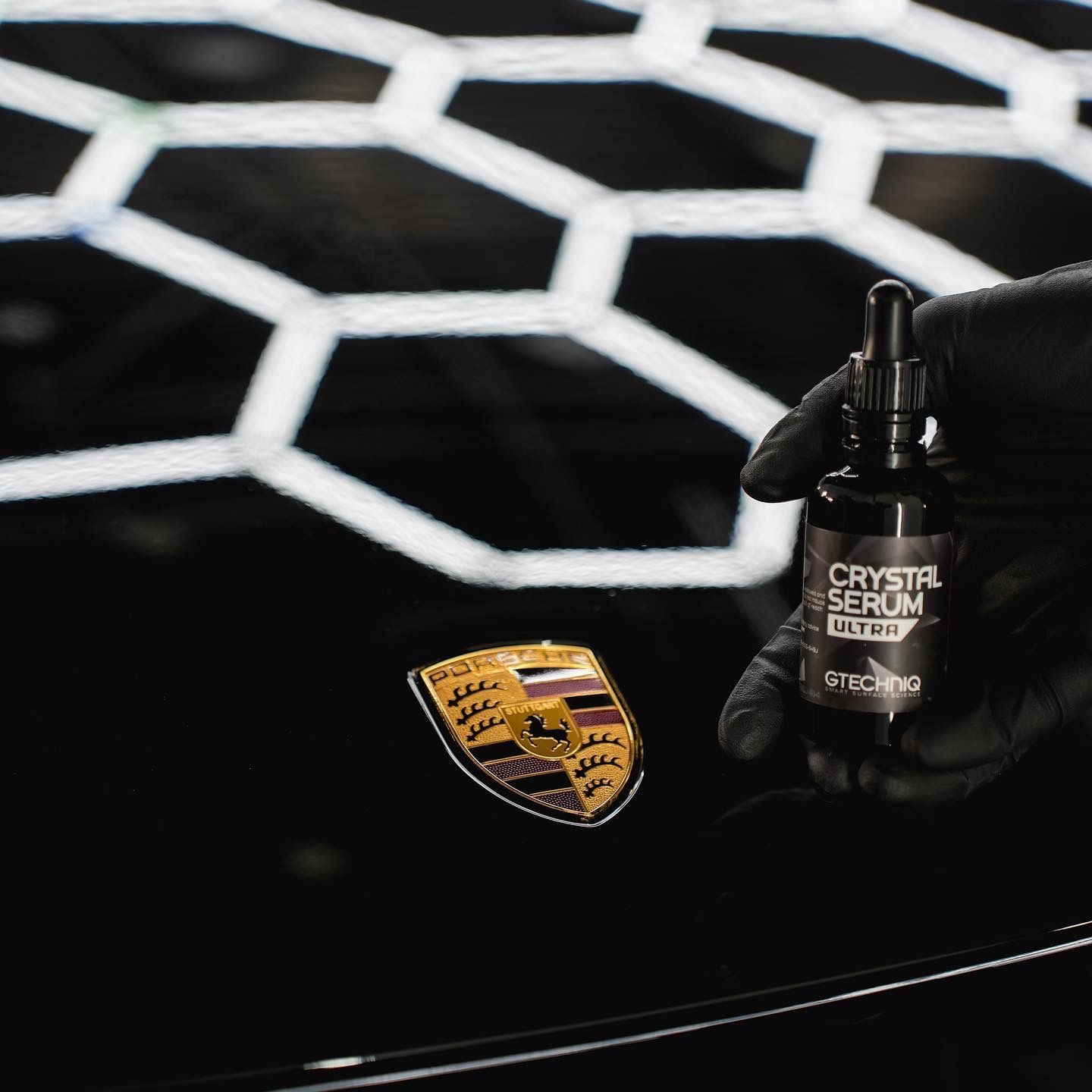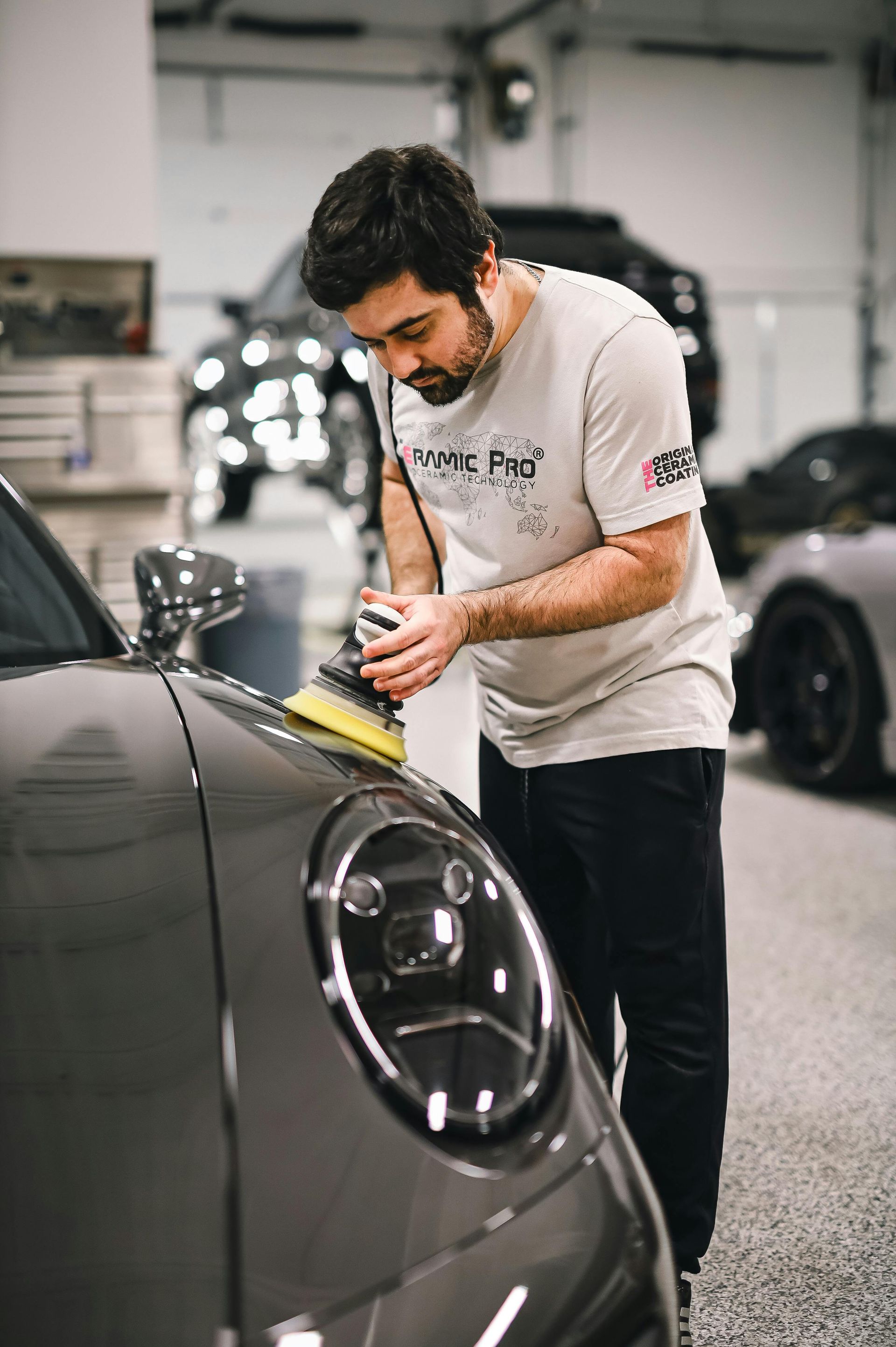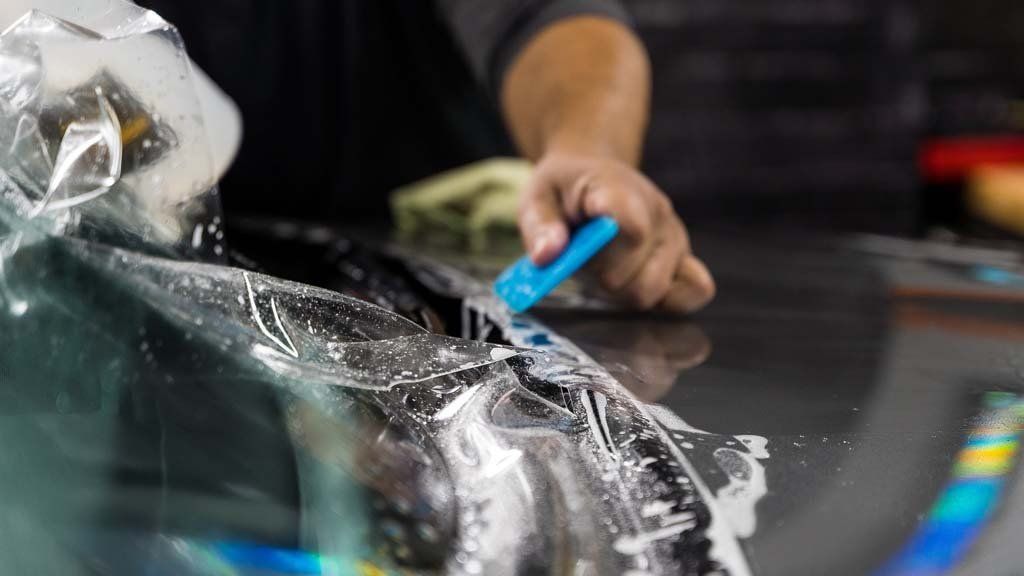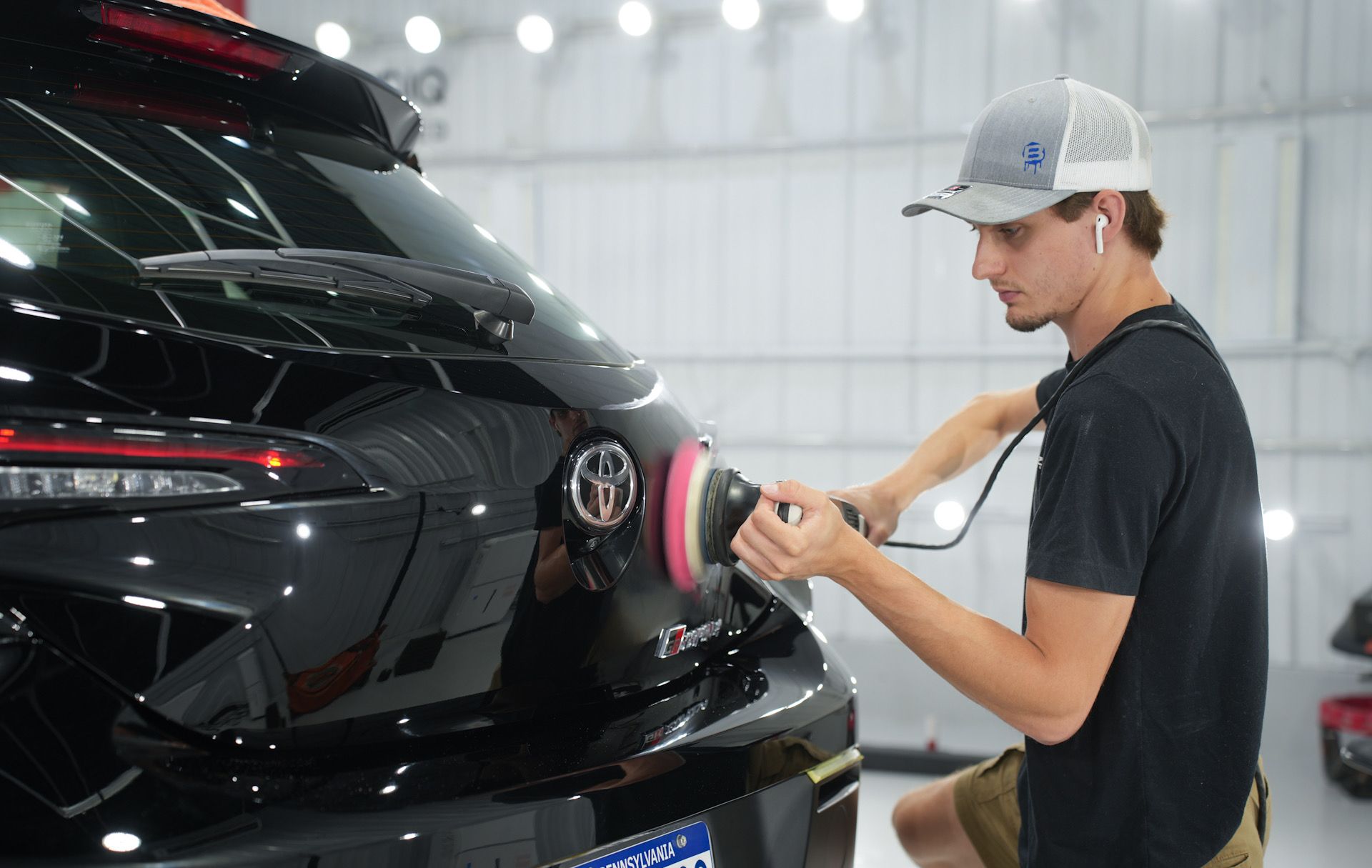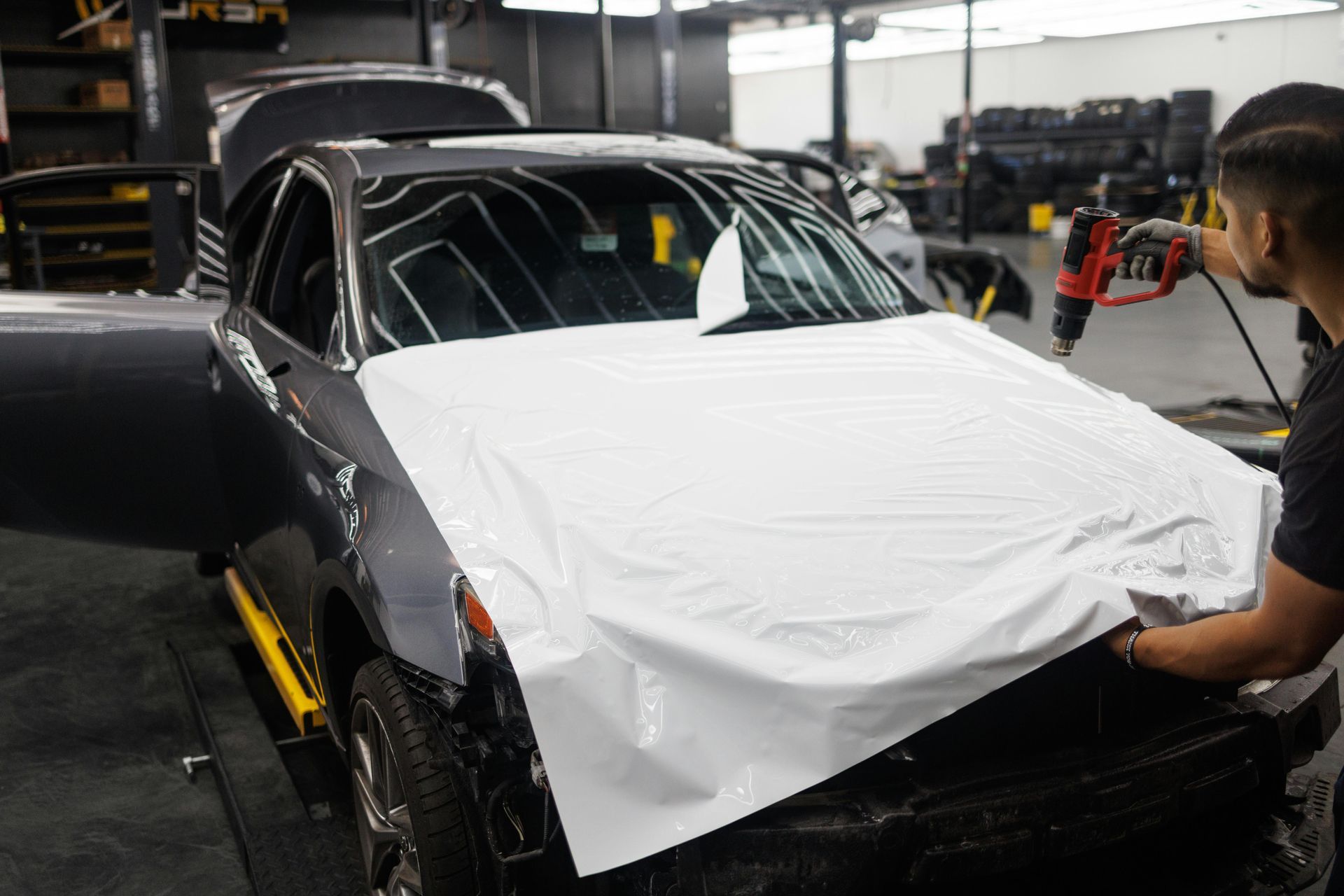Drive through Bethlehem on any sunny day, and you'll spot cars with that unmistakable mirror-like shine. The paint looks so deep and glossy that it almost seems liquid. What's the secret behind these head-turning vehicles? Many of them likely have ceramic coating protection.
The automotive world has been buzzing about ceramic coatings for years now. You've probably heard claims about revolutionary paint protection that lasts for years and makes your car easier to clean. But with price tags often reaching into the thousands, many car owners wonder, Is ceramic coating worth the investment?
Let's examine the science behind ceramic coatings, break down their real-world benefits, and help you decide whether this technology deserves a place in your vehicle care routine.

What Exactly Is Ceramic Coating?
Ceramic coating is a liquid polymer primarily made of silicon dioxide (SiO2) that chemically bonds with your vehicle's paint. Unlike wax or sealants that sit on top of the clear coat, ceramic coating forms a semi-permanent protective layer that becomes part of your paint's surface.
Think of it as adding an extra layer of armor to your car's paint. This microscopic barrier creates a hydrophobic surface that repels water, dirt, and many environmental contaminants that would otherwise damage or stain your vehicle's finish.
The coating process involves careful surface preparation followed by precise application. Professional installers apply the liquid coating in thin, even layers that cure to form a rigid, glass-like surface. At Beadz Auto Detailing, our certified technicians use premium
Gtechniq ceramic coating systems that undergo rigorous quality control measures. The entire process typically takes one to three days, depending on the coating system and number of layers applied.
The Science Behind Ceramic Coating Performance
Understanding how ceramic coating works helps explain why it outperforms traditional protection methods. The silicon dioxide molecules in ceramic coating are much smaller than those found in wax or sealants. These nano-sized particles fill in the microscopic pores in your paint's clear coat, creating an incredibly smooth surface.
When cured, the coating forms cross-linked polymer chains, creating a rigid, glass-like structure. This molecular bonding explains why ceramic coating doesn't simply wash away like wax. The coating becomes integrated with the surface of your paint at a molecular level.
The hydrophobic effect comes from the coating's surface energy properties. Water molecules cannot maintain contact with the ultra-smooth ceramic surface, causing them to bead up and roll away. This same principle prevents many contaminants from adhering to your paint.
Understanding Different Coating Types
Not all ceramic coatings are created equal. Professional-grade coatings typically contain higher concentrations of silicon dioxide and additional hardening agents. These formulations provide better protection and longevity compared to consumer-grade products.
Some coatings include titanium dioxide (TiO₂) for enhanced UV protection. Others incorporate fluorinated compounds for superior hydrophobic properties. The specific formulation affects both performance and price.
Gtechniq coatings, used exclusively at Beadz Auto Detailing, represent some of the most advanced ceramic technology available. These systems undergo extensive testing to ensure consistent performance across different environmental conditions.
Real-World Performance Factors
Your vehicle's environment has a significant impact on ceramic coating performance. Cars exposed to harsh sunlight, road salt, or industrial pollutants will benefit more from coating protection than garage-kept vehicles in mild climates.
Driving habits also matter. Vehicles that experience frequent highway driving are more likely to encounter debris impacts and wind-blown contaminants. City driving exposes cars to more brake dust and urban pollution. Rural driving presents different challenges, such as tree sap and agricultural dust.

The Real Benefits of Ceramic Coating
Long-Lasting Protection
Traditional car wax might protect your paint for a few months at best. Quality ceramic coatings can last three to seven years with proper maintenance. This longevity comes from the chemical bond formed between the coating and your paint, creating protection that won't simply wash away.
Superior Defense Against Environmental Hazards
Your car faces constant threats from UV rays, bird droppings, tree sap, road salt, and acid rain. Ceramic coating provides excellent resistance to these contaminants. The rigid surface prevents many substances from etching into your paint, giving you more time to safely remove them.
Easier Maintenance
The hydrophobic properties of ceramic coating make washing your car significantly easier. Water beads up and rolls off the surface, taking dirt and grime with it. This means less scrubbing during wash sessions and a reduced risk of creating swirl marks in your paint.
Enhanced Gloss and Depth
Ceramic coating amplifies your paint's natural color and adds incredible depth to the finish. The coating creates a mirror-like surface that reflects light beautifully, giving your vehicle that showroom appearance that lasts.
Cost Savings Over Time
Although the upfront investment is substantial, ceramic coating can save money in the long term. You'll spend less on frequent waxing and paint correction services and avoid costly paint repairs from environmental damage.
Understanding the Limitations
Not a Magic Shield
Ceramic coating provides excellent protection, but it's not bulletproof. Severe impacts, deep scratches, or improper maintenance techniques can still damage the coating. It won't prevent rock chips or protect against all forms of paint damage.
High Initial Investment
Professional ceramic coating applications typically cost between $800 and $3,000, depending on the vehicle's size and the chosen coating system. This represents a significant upfront expense compared to traditional waxing.
Still Requires Maintenance
You'll still need to wash your car regularly. While ceramic coating makes cleaning easier, it doesn't eliminate the need for proper car care. Harsh chemicals or abrasive cleaning methods can also damage the coating.
Professional Application Recommended
While DIY ceramic coating products exist, achieving optimal results typically requires professional installation. The application process demands precise technique, controlled environmental conditions, and proper surface preparation.
Ceramic Coating vs. Traditional Alternatives
Compared to Car Wax
Car wax costs less upfront and is easy to apply yourself. Wax typically lasts only two to four months and provides limited protection against environmental contaminants. Ceramic coating offers superior durability and safety, justifying the higher cost for many vehicle owners.
Compared to Paint Sealants
Paint sealants last longer than wax (typically six to twelve months) and provide better protection. Ceramic coating still outperforms sealants in longevity, protection level, and hydrophobic properties.
Complementing Paint Protection Film
For ultimate protection, many car enthusiasts combine ceramic coating with paint protection film. PPF provides superior impact protection against rock chips and scratches, while ceramic coating adds gloss and easier maintenance. This combination offers the most comprehensive paint protection available.
Who Should Consider Ceramic Coating?
Ideal Candidates
Ceramic coating makes the most sense for vehicle owners who:
- Keep their cars for several years
- Park outside regularly
- Live in harsh climates with intense UV, road salt, or environmental pollutants
- Want to maintain their vehicle's resale value
- Prefer low-maintenance protection
- Have the budget for the initial investment
When to Skip It
Ceramic coating might not be worth it if you:
- Trade vehicles frequently (every 1-2 years)
- Have an older vehicle with significant paint defects
- Can't commit to proper maintenance
- Are on a tight budget
- Rarely drive or always garage your car
The Application Process
Professional ceramic coating installation involves several critical steps:
Surface Preparation: The paint must be thoroughly cleaned, decontaminated, and often polished to remove any defects. This preparation is crucial for proper bonding.
Controlled Environment: Application typically occurs in a dust-free, temperature-controlled environment to ensure optimal curing.
Precise Application: Installers apply thin, even coats using specialized techniques to avoid high spots or streaking.
Curing Period: The coating requires time to cure and bond properly with the paint. This process can take 24 to 48 hours, depending on environmental conditions.
Setting Realistic Expectations
Ceramic coating represents a significant advancement in paint protection technology; however, it's essential to have realistic expectations. The coating won't make your car completely maintenance-free or immune to all damage.
Your vehicle will still accumulate dirt and dust over time. The coating makes removal easier, but regular washing remains necessary. Bird droppings and tree sap should still be removed promptly to prevent potential staining.
Rock chips from highway debris can still occur, especially on the front edges of your vehicle. For complete protection against impact damage, consider combining ceramic coating with paint protection film on high-impact areas.
The coating's hydrophobic properties may diminish slightly over time, especially in areas subjected to heavy abrasion. This is normal and doesn't mean the coating has failed. Professional maintenance can restore optimal performance.
Investment vs. Value Analysis
When evaluating the worth of a ceramic coating, consider the total cost of ownership over several years. Traditional wax applications cost $50-100 every three months. Over five years, this totals $1,000 to $2,000 in recurring costs.
Professional ceramic coating requires a higher upfront investment but eliminates the need for regular waxing expenses. The coating also protects against paint damage that could require costly correction or repainting.
Factor in the time savings from easier maintenance and reduced detailing frequency. Many car owners find that these convenience benefits alone justify the investment.
Vehicles with ceramic coating often maintain better resale values due to superior paint condition. This added value can offset a significant portion of the initial coating cost when you sell or trade your vehicle.
Making Your Decision
The question isn't whether ceramic coating works—it does. The real question is whether the benefits align with your priorities and budget.
If you drive frequently, want long-term protection, and can afford the initial investment, ceramic coating delivers excellent value. The safety, enhanced appearance, and easier maintenance often justify the cost for committed car owners.
However, if you're budget-conscious or don't prioritize long-term paint protection, traditional waxing or sealants may be a better fit for your needs.
Professional Installation Matters
The quality of installation has a significant impact on the performance and longevity of your coating. Professional installers possess the experience, tools, and controlled environment necessary for achieving optimal results. They can also assess the condition of your paint and recommend any essential correction work before applying the coating.
When researching installers, look for certified technicians who use quality coating products and provide clear warranties on their work.
Maintenance Best Practices
To maximize your ceramic coating's lifespan:
- Use pH-neutral car wash products
- Wash regularly with the two-bucket method
- Avoid automatic car washes with harsh brushes
- Dry with clean microfiber towels
- Address contaminants quickly
- Consider periodic coating maintenance treatments
Regular maintenance preserves both the coating's protective properties and its visual appeal. Most professional installers provide specific care instructions tailored to their coating systems.
Ready to give your vehicle the ultimate protection from paint damage? Ceramic coating represents one of the most effective ways to preserve your car's appearance while making maintenance easier. The technology has proven itself in real-world conditions, delivering the long-lasting protection and enhanced appearance that car owners demand.
Contact us at
Beadz Auto Detailing to discuss how ceramic coating can benefit your specific vehicle and driving conditions. Our certified technicians will evaluate your paint and recommend the most suitable protection strategy tailored to your particular needs.
For more details and expert opinion, feel free to contact us at
484-866-3022


